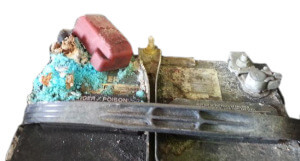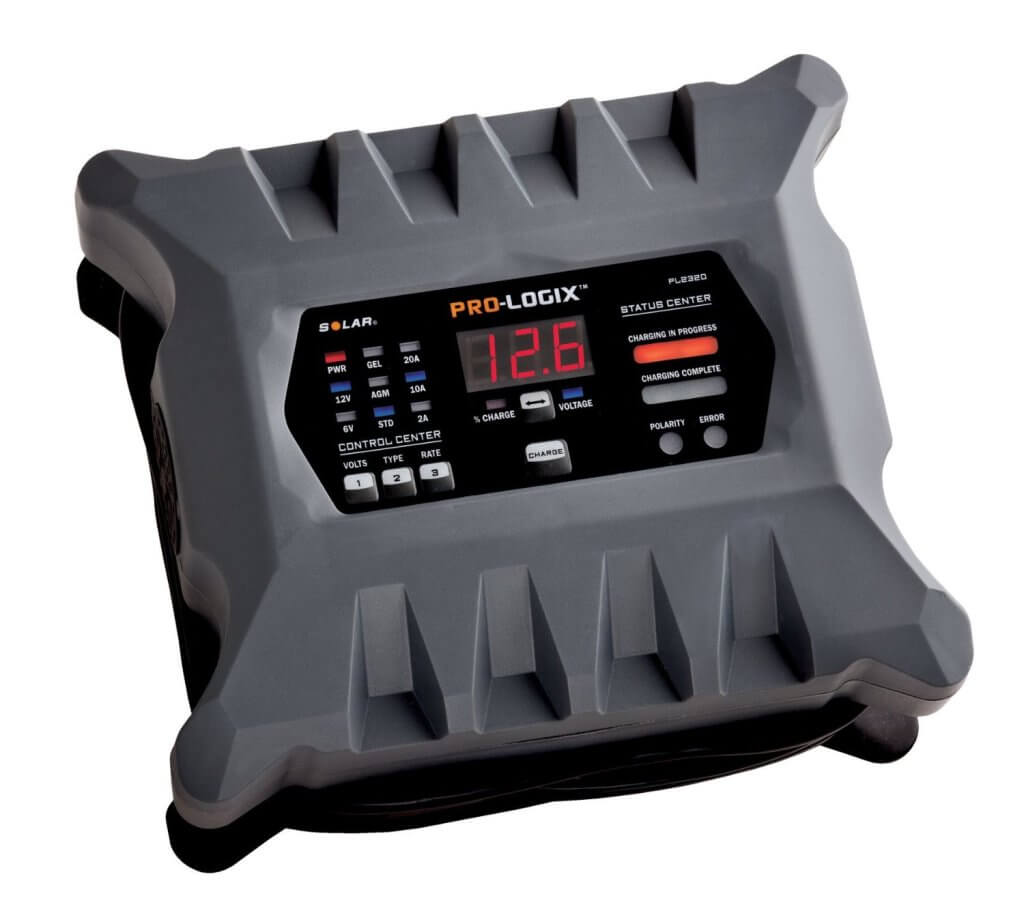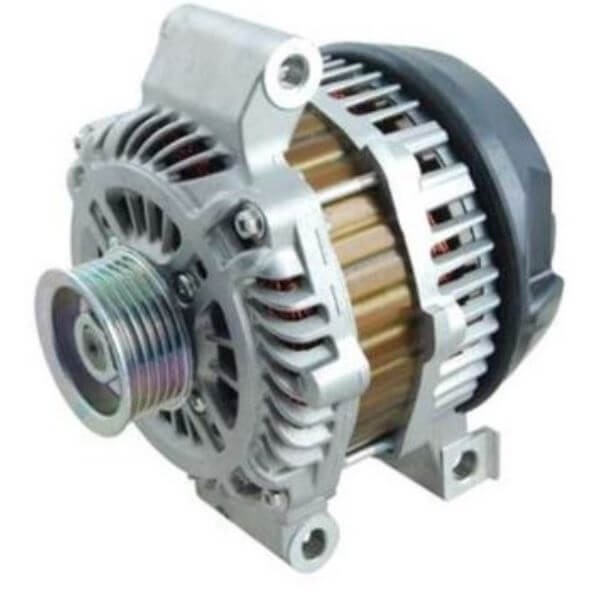Bad alternator — The 3 most common causes of alternator failure
Replace your bad alternator and then avoid the 3 most common causes of alternator failure
Got a bad alternator and don’t want it to happen again? Then learn the 3 most common causes of alternator failure so you can prevent future failures.
#1 Cause of alternator failure— high electrical resistance

Avoid killing your alternator by eliminating excessive resistance in the charging circuit
Battery post and terminal corrosion is the #1 cause of high electrical resistance. The high resistance causes the alternator to run at a higher voltage to overcome the resistance, which causes the alternator to overheat. Battery post and terminal corrosion is not always noticeable with a visual check. In other words, the posts and terminals can have high resistance even when they’re not covered in a powdery coating.
#2 Cause of alternator failure — High heat from excessive use
Alternators are designed to operate under high underhood
heat conditions. But they’re not designed to generate extremely high loads for prolonged periods of time. Charging a severely discharged battery can overheat the rotor and stator windings, causing the insulation to degrade and short. The high-generating load also overheats the diodes, causing them to fail early. Finally, high-generating loads overheat the grease in the front and rear bearings, causing them to fail early.
Using your alternator to charge a severely discharged battery can kill your alternator

One example of a logic-based battery charger that’s safe for modern vehicles
Your alternator can handle short periods of high output to recharge the battery for power lost from a normal start. But recharging a dead battery is a completely different story. In fact, it can take up to a full hour of driving to fully recharge a dead battery. That kind of high output can kill your alternator.
Recharge a dead battery with a battery charger, not your alternator
The numbers are simple. A modern battery charger costs less than $100. A typical alternator costs over $400 including labor. It makes no sense to kill your alternator when you can recharge it with a battery charger.
Stop-and-go driving with high electrical loads is considered excessive use
A typical alternator in a late-model vehicle is capable of outputting up to 160 amps when running at engine speeds of 1,500- 2,000 RPM. That’s enough power to replace battery power lost from starting and to run all electrical accessories. However, it can only output about 1/3 of its maximum capacity when the engine is running at idle speeds and low RPMs. Here’s what that means:
If you run all your electrical accessories (wipers, headlights, blower motor, rear window defogger, and seat heaters) in stop-and-go traffic conditions, your alternator can’t provide all the power and it will have to come from the battery, discharging it at a rapid rate.
Continued cycles of stating, running high loads in stop-and-go traffic or short run times will not only decrease the life of your battery but cause your alternator to run hot and shorten its life.
#3 Cause of alternator failure—a worn belt tensioner
Engines don’t produce a smooth steady stream of power. It’s just the opposite, engines produce a power pulse every time a cylinder fires. It’s the job of the harmonic balancer and the damper inside the automatic belt tensioner to smooth out the power pulses.
The dampener inside the automatic belt tensioner has a useful life of slightly less than 100,000 miles. Once it fails, the belt tensioner will “dance” slightly with each power pulse and that will cause the belt to tighten/loosen rapidly. The belt dance causes vibrations that can prematurely wear out the bearings in your alternator, AC compressor, and power steering pump.
What causes repeat bad alternator failures?
A dead battery cell
This is the #1 cause of repeat failures. A dead cell forces it to constantly charge the battery.
Excessive resistance
Excessive resistance. In addition to battery terminal corrosion, internal battery resistance can dramatically reduce the life of your alternator. Even if your battery voltage tests at or near a full state of charge, internal resistance may still be too high.
How to check for high internal battery resistance
A voltage and load test tells you what’s coming out of the battery, but it doesn’t tell you how power is flowing into the battery. That’s where a charging amp test comes into play.
Connect an amp probe to your fully charged battery and start the engine. You should see an inrush of approximately 40-50 amps for about 5-mins. The amps should drop down to below 10 amps by the 5-minute mark. If the amps remain high and all the cables and posts are clean, the battery has too much internal resistance. A current draw of just 28 amps for longer than 5-mins can kill a replacement alternator in as little as 3 days.
©, 2020 Rick Muscoplat
Posted on by Rick Muscoplat

